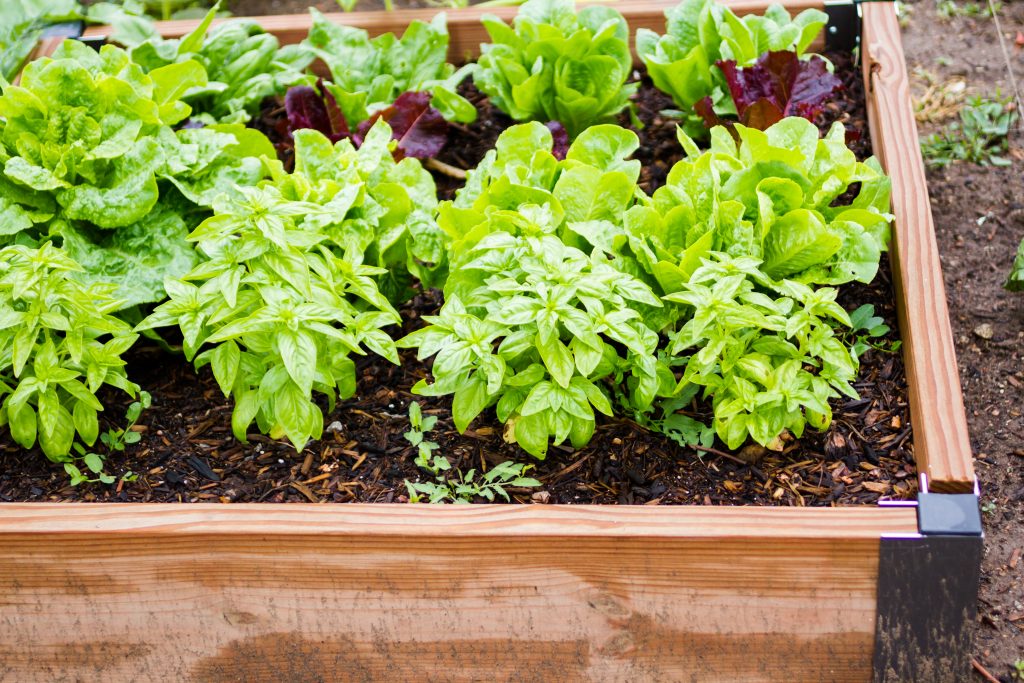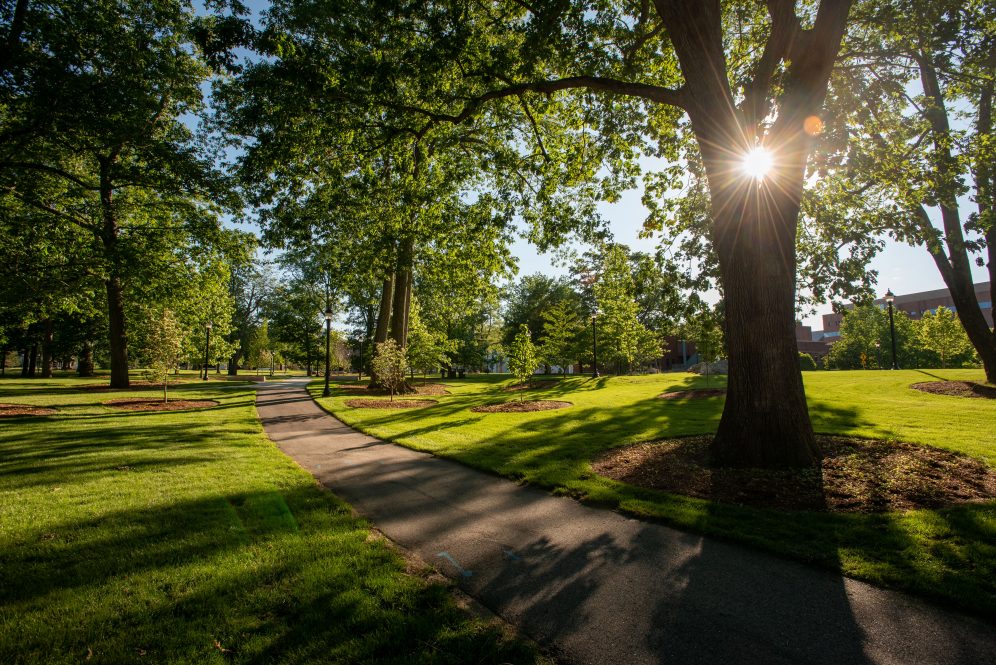UConn Extension specialists are here to help you with answers to your burning summer questions. Their educators provide resources for healthy summer snacks for your family, on testing your drinking water, deciding where to plant a tree, and watering your vegetable garden.
UConn Extension has more than 100 years’ experience strengthening communities in Connecticut and beyond. Extension programs address the full range of issues set forth in the College of Agriculture, Health and Natural Resources (CAHNR) strategic initiatives:
- Ensuring a vibrant and sustainable agricultural industry and food supply
- Enhancing health and well-being locally, nationally, and globally
- Designing sustainable landscapes across urban-rural interfaces
- Advancing adaptation and resilience in a changing climate.
Programs delivered by Extension reach individuals, communities, and businesses in each of Connecticut’s 169 municipalities.
Q: Help! My kids are home for the summer and all they want are snacks! Can you give me some healthy suggestions that everyone will eat?
I hear where you are coming from and you have come to the right place. UConn EFNEP (Expanded Food and Nutrition Education Program) is here to lead you in the right direction.
- Fruits and vegetables are perfect snacks! They are in season, taste great and grown locally. Adding these foods in as snacks helps everyone meet their fruit and vegetable goals. Place a bowl on the table with fruits for easy access. Store washed and chopped veggies front and center in the refrigerator, so no one will miss them.
- Make fruit and veggie dip using a large container of plain yogurt.
- Veggie dip: Add yogurt, garlic powder, Italian seasoning blend, black pepper and salt. Fresh herbs can be added also – chives, parsley, basil, oregano, or your favorite.
- Fruit dip: Add yogurt, honey, vanilla extract, and cinnamon.
- Fruit smoothies can be made and frozen for a cool treat. Add fruit, milk or juice, and yogurt. Then freeze in popsicle molds or disposable cup with a plastic spoon as a stick held up with plastic wrap. Freeze and enjoy.
- Trail mixes are fast and handy! Take all those partial boxes of whole grain cereal, small crackers, popcorn, dried fruits and nuts and mix in a large food storage bag or air tight container. This can be easily accessed or separated out into snack bags for grab and go.
- Frozen bags of edamame (immature soy beans in or out of the pod) can be microwaved and tossed with a dash of salt, low sodium soy sauce or garlic powder. Eat hot or cold.
- Staying hydrated is important! Make water tastier by freezing fruit in ice cube trays with water. Break out and save them in a plastic zip top bag and add them to water for extra flavor.
- Start with a whole wheat tortilla and spread cream cheese or nut butter on it, and top with the spread with veggies or fruits. Roll it tight and slice into little pinwheels.
More ideas:
Frozen grapes, fruit + yogurt parfaits, English muffin pizza, hummus and veggies, fruit salad, nut butter on apples or celery, 100% fruit juice popsicles, banana or blueberry muffins, cheese sticks, cheese, and veggie quesadillas. These are just a few of the many healthy summer snacks that for you and your family.
Visit efnep.uconn.edu for more recipes and information on our program.
- Erica Benvenuti, RD | Community Nutrition Educator, UConn Extension
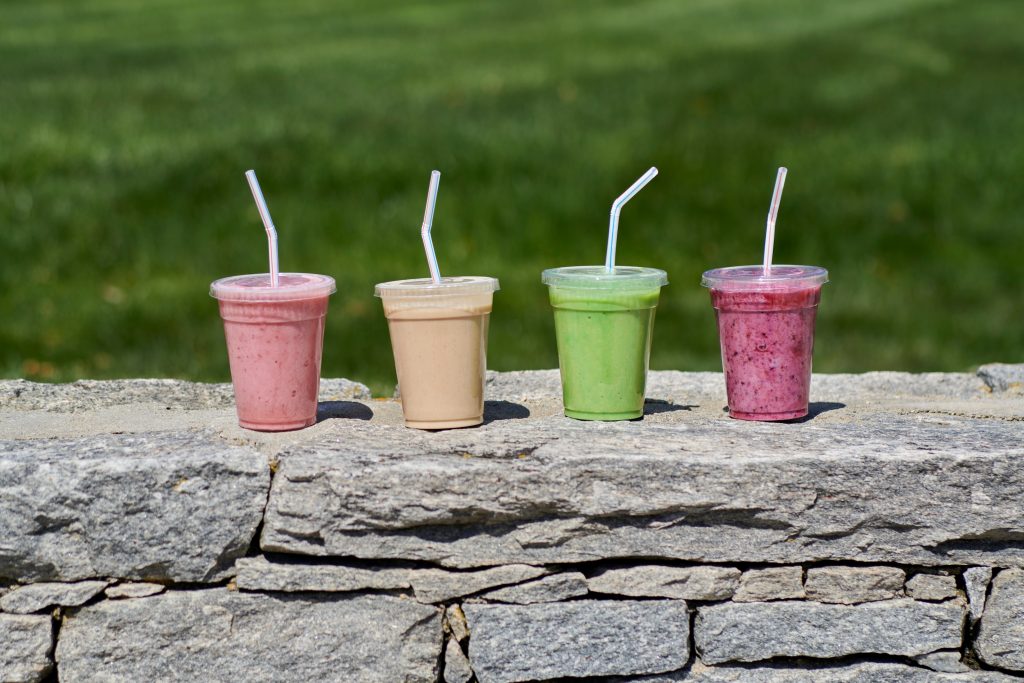
Q: Is my tap water safe to drink?
Okay, I get it, you have a busy life. Jobs, kids, aging parents, and then COVID on top of it all. It is no surprise that you have not had your drinking water tested since…well, when was the last time you had your water tested? If you have “city water,” your water company is required to complete routine testing to make sure that the water is safe for you to drink. They are also required to post these results (usually on their website) so you can review them. But if you have a private well in Connecticut, the only requirement for testing is when the well is installed. Many mortgage lenders will ask for a test when a home is being purchased, but beyond this there are no requirements for testing.
I talked about this issue in a video segment. New findings related to drinking water safety in Connecticut have materialized since then. Perhaps you saw a news segment this spring about arsenic and uranium being found in drinking water across our state. The United States Geological Survey and the Connecticut Department of Public Health collaborated on a study of private bedrock wells in Connecticut. Around four to five percent of private wells had levels of arsenic and uranium higher than EPA drinking water standards. These elements are naturally present in some rock formations, but arsenic can be a remnant from older pesticides applied to orchards in the state.
So, I urge you again, please test your drinking water, and add arsenic and uranium to the testing list. Many of us are so careful about reading food labels to make sure that the food we eat is safe and healthy. You are responsible for ensuring that the water you drink is safe for your family to drink.
Check out this map to find a testing lab near you. Red icons are labs that test for arsenic and uranium, in addition to the regular potability parameters. Purple icons are labs that just test for the basic potability parameters. And here are some resources from the Connecticut Department of Public Health on the typical water tests that are performed, and the reasons why.
-Michael Dietz, Ph.D. | Extension Educator, Water Resources
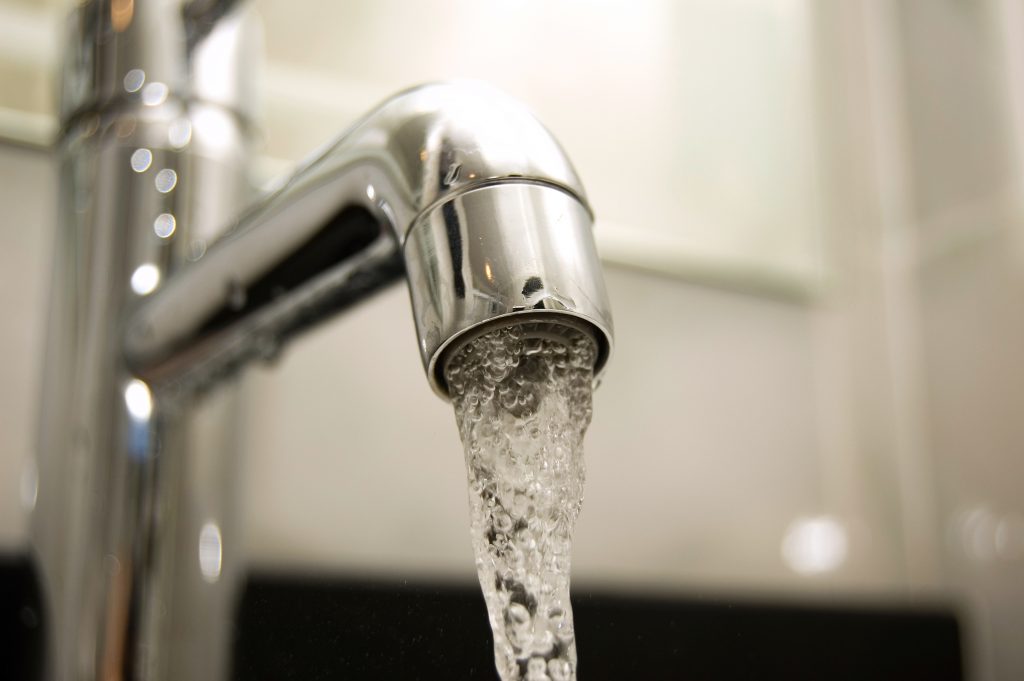
Q: How do I decide what kind of tree to plant?
In Connecticut, we are fortunate that many plants, such as trees and woody shrubs, naturally regenerate easily. If humans did not interfere with natural succession, our landscape would be almost completely covered with vegetation, both as a tree canopy and an understory.
We live in a highly populated state, however, and humans have been manipulating their surroundings for eons. We sometimes or often prefer one plant over another around our home, our communities and other areas where we interact with people, wildlife, and the landscape.
Planting the right tree in the right place is not as complicated as you might think. However, examples of a wrong tree planted in a wrong place are many, such as, tall, single- and even multi-stemmed trees planted under power lines. These trees end up deformed by necessary pruning to maintain electrical power. Another example would be evergreen trees, such as White pine and American hemlock, over or near roads and sidewalks possibly shading in winter, causing dangerous icy surfaces. A last one would be planting a tree that would grow beyond a safe space threatening people and property in a weather (wind, snow, ice, lightening) event, such as a tall Silver maple over a playground.
There are several elements to consider as to what tree to plant and where to plant it:
Assess the situation: First and foremost is where do you want a tree placed. You need to consider will it be close to or over your house? Away from buildings and other structures? Do you have a small lot with neighbors (property borders and fencing) close by, or a multi-acre lot? What about underground electrical wires, gas lines, water and septic systems (wells, lines, fields)? Are there driveways, sidewalks, above ground electrical and communication lines? Consider how much space there is between where you want the tree to go in relation to objects above and below. These factor into whether or not the site is suitable for a tree at all, and in considering what species, size, form, dimensions, and longevity to choose.
Design considerations: Trees in the landscape provide many benefits including beauty, shade and cooling, increased property value, and relaxation and calming effects. Do you want a tree for its flowers? Bark color? Fall foliage? Disease free or drought tolerant? Keep in mind crown width, height, upright, oblong, round, size at maturity when considering tree species. Would you prefer year-round foliage (evergreens/conifers) or just six months out of the year (deciduous)? A single or multi-stemmed trunk? Want it the same or similar as other trees nearby? Or, different all together, for diversity and contrast. Do you want the plantings to be dense, or more widely spaced? Heavy shade? Fifty percent, or more sun penetration? Would you prefer a species native to Connecticut, or an exotic (not invasive) species? These are all questions you need to consider.
Tree form: Tree species come from and are significantly characterized by form. Some species have selected varieties or cultivars chosen specifically for genetically controlled form. Forms are layered (branchy), rounded, upright (taller than wider), pyramid, vase shaped, broad (wider than taller), and weeping, to name a few.
Plant and soil considerations: What are the site and soil conditions where you are thinking of planting a tree? You first need to consider soil conditions, such as drainage and fertility, in the planting zone. Tree roots grow out (18 inches to 2 feet in depth generally) where there is available soil nutrients, water, and oxygen. The more outward space (hence soil volume) they have to grow, the more likely the tree will thrive.
Most soils in New England have all the nutrients needed for almost all native trees. There is rarely a need for soil remediation unless the soil has been altered, such as with roadside or urban soils. Some trees prefer more acidic soils while others prefer “sweet” soils (less acidic). All trees prefer bright sun, but some can tolerate shade better than others. Almost all tree species need a good supply of readily available soil moisture while some can tolerate short durations of high or standing water.
Future maintenance: Tree species vary widely in terms of maintenance. All trees shed the leaves/needles and this usually, not always, requires cleanup. As trees mature and age, woody material (bark and branches), and spent flowers, seeds (fruit, nuts, acorns, samara) will disperse around the tree. Some trees attract insects you might not like—for example, Tulip poplar attracts an aphid that creates honeydew than can get on cars, sidewalks, roofing, and outdoor furniture.
All these elements play into your choice of tree species/variety and planting location. Invest time planning ahead and making your selection so you can plant the right tree in your space, to have and enjoy for many years.
-Robert M. Ricard, Ph.D. | Senior Extension Educator, Forestry
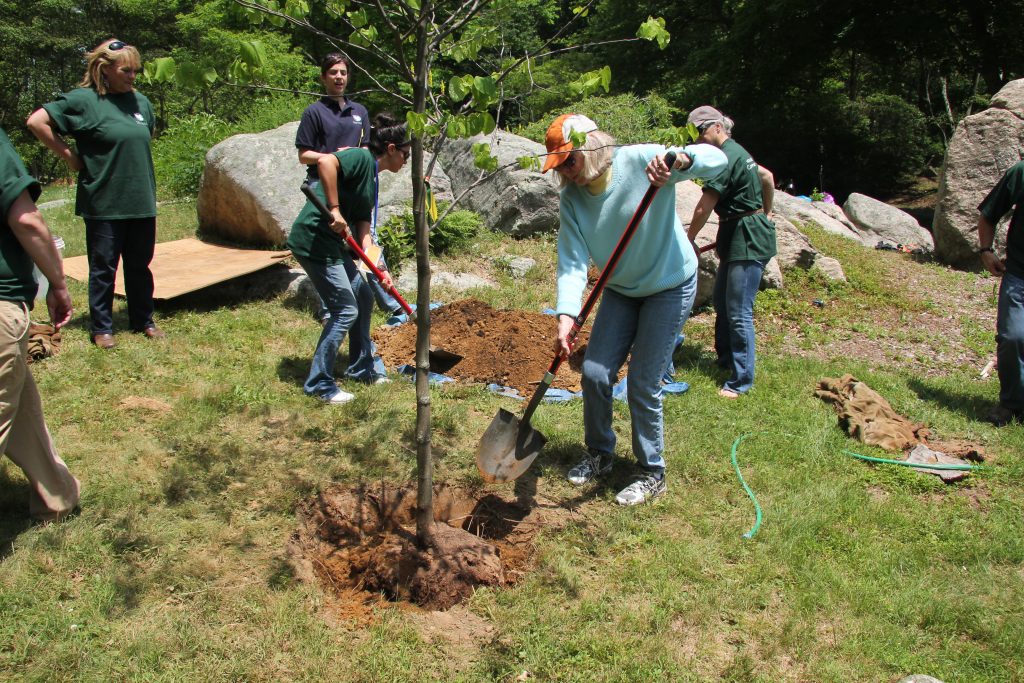
Q: How often should I water my vegetable plot?
Deciding when to water (or irrigate) your vegetables should not rely on visual plant cues such as leaf curling or wilting. Before such symptoms appear, mild moisture stress could have affected plant health, potentially reducing the harvest. Here, we will talk about when and how much we should water our vegetable plants and why.
How does moisture stress affect my crops?
Most vegetables are 80 to 95% water. Because they contain so much water, their yield and quality suffer very quickly from soil moisture stress. Moisture stress affects germination, leaf expansion, root development, and reduces nutrient uptake which affects yield and quality.
How much water does my vegetable plot need?
A vegetable plot needs one inch of rain per week in general. By using a simple rain gauge or following weather reports, you can determine how much rain your area received over a week. For a 100 square-foot area, one inch of rain is ~62 gallons. If your plot is 20 feet by 30 feet (600 square feet), after a week without rain, it would need 62 x 6 = 372 gallons of water. You can determine how long you have to turn on your water to get 372 gallons by using a 5-gallon bucket. First, record the time to fill a 5-gallon bucket. If it takes 10 seconds to fill a 5-gallon bucket using your water source, it will take 744 seconds or 12.4 minutes to get 372 gallons.
Are water requirements similar for different vegetables and soil types?
Not really. Knowing the crop's rooting depth and the soil type is important in estimating how much water is needed at any one irrigation event. Light irrigation is needed more frequently for shallow rooted crops soil like radish, onion, lettuce, and celery and crops in sandy soil (low water holding capacity), whereas less frequent but deeper irrigation is needed for deep rooted crops like asparagus, pumpkin, and tomato and in heavy soil (more clay, great water holding capacity).
When should I water my vegetables?
One way to know when to water is using a moisture sensor or tensiometer. Another way is to use a spade or a trowel. Dig into the soil. If the soil is dry two inches below the surface, it is time to water. On sandy soil, you generally need to water twice a week whereas in heavier (clay) soils, or loamy soils high in organic matter (>5%), watering once a week is adequate after the crop establishes itself. However, you need to water more frequently in newly planted plots. Depending on the weather, you should be watering your newly planted beds every one or two days.
If you have further questions about your vegetable plants, Ask UConn Extension.
-Shuresh Ghimire, Ph.D. | Assistant Extension Educator, Vegetable Crops
